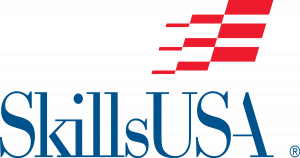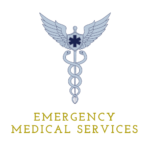
Emergency Medical Services (EMS) Pathway
Under Development
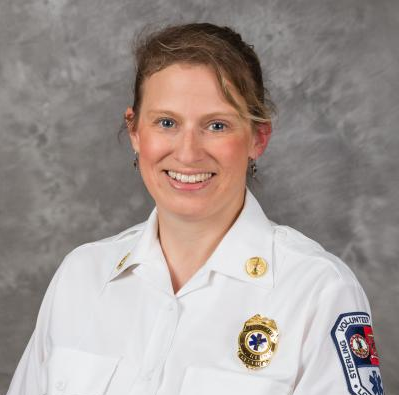 National Emergency Medical Services Pathway Specialist
National Emergency Medical Services Pathway Specialist
MaryBeth Henry
Click Here for her LinkedIn
Email: ems@lapsen.org
Marybeth has extensive experience in education and emergency services. She has been teaching for two decades.
Recommended Emergency Medical Services (EMS) Pathway
The courses below are recommended by our Board and network of industry experts. Each course link will lead to a page with lesson plans, national standards, and resources. For more information, feel free to email info@laspen.org
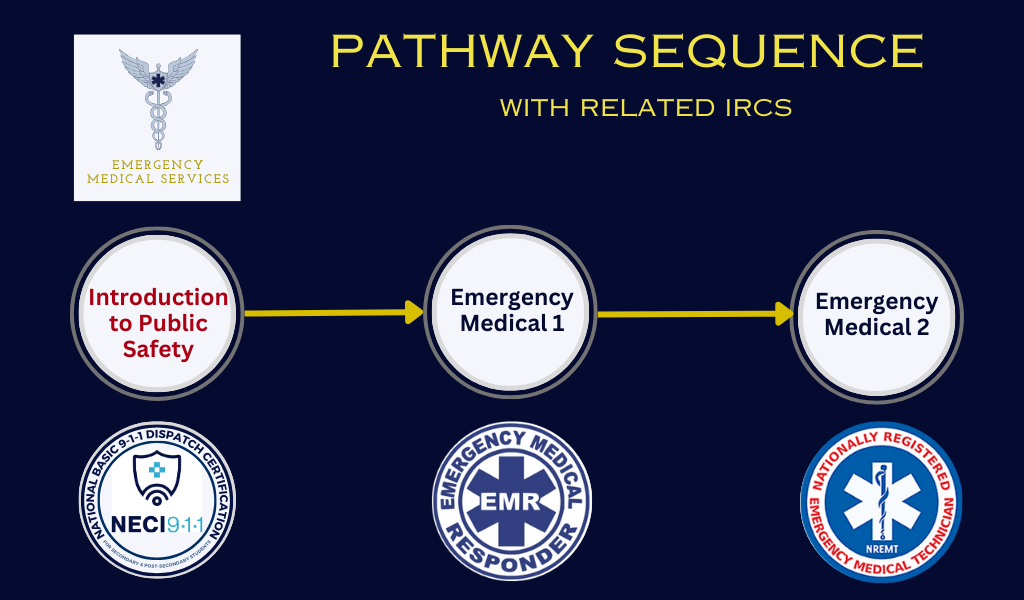
Public Safety Pathway – an alternative
A broad based public safety pathway is an option. This pathway has some EMS and some Fire. To learn more – Click Here.
This is a national exemplar. Each state makes decisions on how to best serve their industry and school programs. Always refer to state and local guidelines for implementation.
Public Safety Pathway – an alternative
A broad based public safety pathway is an option. This pathway has some EMS and some Fire. To learn more – Click Here.
Introduction Course Option1 – Introduction to Public Safety Service (IPSS)
Being designed
Introduction Course Option 2 – Introduction to Law and Public Safety (ILPS)
It is recommended that an EMS pathway begin with a broad based introduction to the law and public safety system. EMS professionals are a key part of the larger law and public safety system, so a critical starting point for the pathway is an exploration of the larger ecosystem the EMS lives in. Additionally, it is advised that a high school pathway in EMS not become so specific to EMS exclusively that participants are not exposed to other elements in LPS. The broader approach helps with marketing to encourage students to enroll.
Visit our Introduction to Law and Public Safety course page – with lesson plans – Click Here
Emergency Medical Services 1 (EMS1)prepares students to work in a fast-growing career field in LPS. Once students complete this course they will be fully prepared for entry-level work in the field. The course is designed for high school students as part of the Career and Technical Education (CTE) program. This course aims to provide students with fundamental knowledge and skills essential for entry-level positions in emergency medical services. Participants will learn about basic anatomy, medical assessment, emergency response procedures, and patient care. It is recommended students test for Emergency Medical Responder (EMR) at the end of the course.
Visit our Emergency Medical Services 1 course page – Click Here
Emergency Medical Services 2 (EMS2) prepares students to work in a fast-growing career field in LPS. Once students complete this course they will be fully prepared for entry-level work in the field. The course is an extension of the basic EMS training designed for high school students as part of the Career and Technical Education (CTE) program. This advanced course builds upon the foundational skills acquired in EMS Basic Training, providing students with in-depth knowledge and advanced techniques required for higher-level roles in emergency medical services. It is recommended students test for Emergency Medical Technician (EMT) at the end of the course.
Visit our Emergency Medical Services 2 course page – Click Here
Advanced Course Options
LAPSEN recommends pathways have flexibility for local systems to adjust to local needs. It is also recommended that a “deeper dive” into DC -related content come from dual enrollment opportunities, if possible. The DC course covers secondary educational needs adequately. To maximize student career preparation, engagement, and marketing it is suggested to offer courses similar to those listed below to complete the pathway.
Option 1 – Firefighting 1 (F1)
F1 is another great option as it is both marketable and industry is demanding broad public safety skills for career candidates. This course aims to provide students with fundamental knowledge and skills essential for entry-level positions in firefighting and related emergency services. Participants will learn about fire prevention, basic firefighting techniques, equipment operation, and emergency response procedures.
Visit our Firefighting 1 course page – Click Here (page is under development)
Option 2 – Drones for Law and Public Safety (DLPS)
Bring some excitement to your pathway! This course prepares students for certifications to operate drones in the law and public safety environment. Drones are increasingly used in DC areas. First, students will complete the necessary training to be prepared to pass the FAA 107 Pilot test. Students will then train in remote sensing and photogrammetry. Students will learn how to prepare and plan for law and public safety drone operations. A significant portion of the course time will be dedicated to developing flight skills and performing maneuvers necessary for such operations. Using the National Institute of Standards and Technology national standard performance test for unmanned aerial vehicles, students will train for real world applications.
Visit our Drones for Law and Public Safety course page – Click Here
Other Options
There are many options that local systems can review that may fit more appropriately.
Visit our overall course page – Click Here
Industry Recognized Credential (IRC) for the EMS Pathway
EMR or EMT?
LAPSEN is now recommending high schools only attempt EMT certification in situations where students are likely to succeed on the NREMT. The pathway needs at least 250 hours of dedicated EMT instruction, a well trained teacher, and be in a strong performing school. Teaching a full EMT curriculum, but having students take the EMR will increase the likelihood of success on their first professional exam, adequately prepare them for post secondary, and allow for transition to careers from graduation.
 Emergency Medical Responder (EMR)
Emergency Medical Responder (EMR)
Emergency Medical Responders provide immediate lifesaving care to critical patients who access the emergency medical services system. EMRs have the knowledge and skills necessary to provide immediate lifesaving interventions while awaiting additional EMS resources to arrive. EMRs also provide assistance to higher-level personnel at the scene of emergencies and during transport. Emergency Medical Responders are a vital part of the comprehensive EMS response. Under medical oversight, Emergency Medical Responders perform basic interventions with minimal equipment.
To learn more – Click Here
Emergency Medical Technician (EMT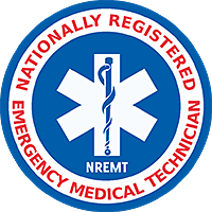 )
)
Emergency Medical Technicians provide out of hospital emergency medical care and transportation for critical and emergent patients who access the emergency medical services (EMS) system. EMTs have the basic knowledge and skills necessary to stabilize and safely transport patients ranging from non-emergency and routine medical transports to life threatening emergencies.
To learn more – Click Here
 Training
Training
Instructors in the LS pathway need to have industry experience or training. If you have a specific training need email info@lapsen.org
Click Here to go to our Training Schedule
 Career Posters
Career Posters
Click Here to go to download folder. Free for you to use as you see fit!
Competitions
The EMS pathway national CTSO is SkillsUSA. There is an EMT and First Aid/CPR competition. There are also several competitions that students can choose from to participate in that support the EMS pathway content.
For more information visit www.skillsusa.org/competitions or reach out to info@lapsen.org
EMT
Student teams of two demonstrate knowledge and skills necessary to be EMTs. There is a knowledge test and several skill demonstrations plus emergency medical scenarios.
First Aid - CPR
Basic DC skill for a single competitor. Evaluates a competitor’s ability to perform procedures or take appropriate action based on scenarios presented related to CPR first aid medical emergencies. There is also a written exam.
Criminal Justice
This competition is a single competitor preparing to be officers or to work in other areas of criminal justice.
Commercial sUAS Drone
This competition for a team of 2 is designed to evaluate team members’ skills in the safe and efficient use of drone technology
Crime Scene Investigation
A team event testing students’ knowledge and skill sets in crime scene investigation. In addition to a knowledge test, teams record a crime scene, process evidence, and interpret results.
Customer Service
The competition evaluates students’ proficiency in providing customer service. This is one of the highest valued skills sets sought by DC employers.
Job Skill Demonstration - 3 Contests
Competitors demonstrate and explain an entry-level skill used in the occupational area for which they are training. “A” refers to skills taught in the pathway. “Open” is usually a skill learned in WBL or similar that is outside the pathway. “Action Skills” is for students with IEPs. In all cases, the skill should be hands on as it is a “demonstration.”
Robotics - Urban Search and Rescue
A student team designs and operates a robot that simulate equipment used in rescue operations.
There are dozens more that cover everything from speeches to specifc skill sets.
 Student Recognition
Student Recognition
Your students can be members of the National Technical Honors Society PLUS a special endorsement for achievement in law and public safety! Don’t have an NTHS – they are super easy to start and no extra work.
Click Here to learn more.
 Programs of Excellence
Programs of Excellence
The national Industry Credentialed Program of Excellence (ICPE) is designed to make the best better. Applicant programs must demonstrate competencies across several standards. LAPSEN specialists assist applicant programs throughout the process with training, guides and mentorship.
Click Here to learn more. Do YOU have the BEST program?
National Program Directory
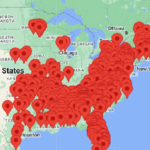 The National Census of Youth Law Enforcement Programs was funded by the DOJ COPS grant program.
The National Census of Youth Law Enforcement Programs was funded by the DOJ COPS grant program.
Search the directory for programs near you – Click Here
Is your program is in the directory? If not: Click Here
Links
60 Seconds to Survival Disaster Triage Game – Amazing game that will teach the students to triage quickly. The first scenario is a School Shooting – so you may want to run by Admin first. Click Here
CTE On-line (CA based) EMS resources: https://www.
Classroom Tools for EMS Educators (Limmer): https://
Study Resources: https://
High School Fire and EMS Cadet Facebook Page: https://www.facebook.
Lesson Plan on GCS – Click Here
EMR and EMT psychomotor examinations materials:
EMR – Click Here
EMT – Click Here
